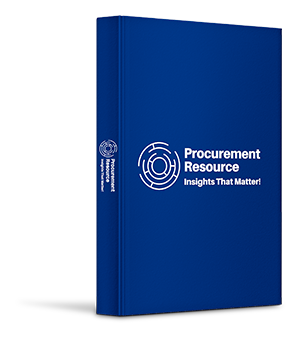Reports

Global Glycerin Market: Country Overview; Recent Events; Value Chain Analysis; Production Process; Cost Structure; Market Dynamics: Drivers & Constraints, Innovations & Trends, SWOT Analysis, Porter’s Five Forces; Industry Best Practices: Sourcing Strategy, Procurement Model, Contract Structure, Key Factors Influencing the Quotation; Key Supplier Analysis, 2024-2032
Glycerin Industry Report by Regional Category Spend, Price Analysis, Key Demand, and Price Indicators, and Best Buying Practices
The global Glycerin market reached a value of about USD 3.15 billion in 2021. The industry is projected to grow at a CAGR of around 3.2% in the forecast period of 2022-2027 to reach a value of about USD 3.76 billion by 2027.
The global Glycerin industry report gives a comprehensive analysis of the industry, including key segments, trends, drivers, restraints, the competitive landscape, and other essential market aspects. The wide range of uses of the product is driving the market growth. China is the highest category spender by region that is driving the demand for the Glycerin industry.
Industry Definition and Segmentation
Glycerin, or glycerol, is a simple polyol natural chemical made from plant or animal fats. It's a colourless, odourless, viscous liquid with a pleasant flavour that's also non-toxic. The Glycerin industry report comprises segments by source (biodiesel, fatty acids, fatty alcohol, saponification and synthetic), application (pharmaceuticals and personal care, epichlorohydrin, food and beverage, tobacco humectants, and alkyd resin) and region (North America, Europe, Asia Pacific, Latin America and the Middle East, and Africa).
China is Driving the Growth of the Industry
China holds the largest share in the industry as it is one of its major glycerin users. Cosmetics and personal care are one of the country's fastest-growing industries. The Chinese cosmetics and personal care market have foreseen good development across many industries, including makeup, skincare, haircare, personal hygiene, perfumes, etc. China is also the world's second-largest and fastest-growing pharmaceutical market furthering the market's expansion.
The market is being driven by applying the product in various industries, including pharmaceuticals, personal care, and cosmetics. It is owing to the properties of the product. Because of its increased use in hand sanitisers, soaps, handwash, and detergents, glycerin demand has surged for end-user sectors like pharmaceutical and personal care, propelling the industry forward. Furthermore, it is used to offer smoothness and lubrication in a variety of personal care and cosmetics items, including toothpaste, soaps, shaving creams, skin, etc., boosting the market sales. Glycerin generated from vegetable oils is likely to profit from the increased demand for natural ingredients across end-use sectors such as food & beverages, thus resulting in the industry's development.
However, the adverse effects of pharmaceutical glycerin, such as diarrhoea, polyuria, nausea, dry mouth, and others, are hampering the market expansion.
Best Procurement Practices
The global Glycerin industry report by Procurement Resource gives an in-depth analysis of the best buying practices followed by major global Glycerin regions across the globe, such as engagement models, contract terms, and buyer and supplier negotiation levers, among others.
Category Management Studies
Glycerol may be made from propane in a variety of ways. The most significant is the epichlorohydrin method, which requires chlorinating propylene to produce allyl chloride, which is then oxidised with hypochlorite to produce dichlorohydrins, which react with a solid base for produce epichlorohydrin. Glycerol is made once the epichlorohydrin is degraded. The glycerol production from acrolein and propylene oxide are examples of chlorine-free propylene processes.
Growing Applications of the Product, Further Propelling the Procurement of Glycerin
The growing prominence of the product is propelling the industry as a platform chemical that is projected to broaden the range of applications in this market. Increased biodiesel production has resulted in an ample supply of crude glycerin, which may be used directly in animal feeds as a dust suppressant to keep coal from freezing and store grains. Because of the overstock and accompanying price drop, glycerin may now be used to generate electricity increasing its demand. The market is expected to rise due to the rising use of glycerin in treating high eye pressure diseases such as glaucoma and during eye surgery and as a replacement for alcohol in the manufacturing of herbal and botanical tinctures augmenting the industry. Also, ongoing R&D initiatives in pharmaceutical glycerin are expected to open up new market prospects.
The regional markets for the industry can be divided into North America, Latin America, Europe, the Middle East and Africa, and the Asia Pacific.
Key Industry Players Mentioned in the Glycerin Industry Report
- Archer Daniels Midland Company
- Twin Rivers Technologies Inc.
- Kuala Lumpur Kepong Berhad
- Cargill Incorporated
- Emery Oleochemicals LLC
Market Landscape
The industry for the product is highly concentrated, with the top firms controlling the majority of the market. The market is fiercely competitive, with many small companies. Various businesses dominate the glycerin industry based on their key strengths. Over the years, the most common tactics have been expansion and mergers and acquisitions.
Key Initiatives by Companies
- IOI Corporation Berhad stated in October 2021 that it would invest MYR 220 million in developing a new 110,000 metric tonne (MT) per year oleochemical facility in Prai, Penang. The new plant will primarily produce palm and palm kernel-based fatty acids and glycerine, vital ingredients in personal care and cosmetics. By the second quarter of 2022, the factory should be finished.
- Emery Oleochemicals (Malaysia) is well-known across the world. To acquire market share, the company has extensively invested in R&D and is concentrating on broadening its operations across new sectors and markets. New items that meet clients' specific needs are expected to help the firm expand.
1. Executive Summary
2. Glycerin Market Snapshot
2.1. Glycerin Market Outlook
2.2. Glycerin Industry Analysis by Source
2.2.1. Biodiesel
2.2.2. Fatty Acids
2.2.3. Fatty Alcohol
2.2.4. Saponification
2.2.5. Synthetic
2.3. Glycerin Industry Analysis by Application
2.3.1. Pharmaceuticals and Personal Care
2.3.2. Epichlorohydrin
2.3.3. Food and Beverage
2.3.4. Tobacco Humectants
2.3.5. Alkyd Resin
2.4. Region/Country Overview
2.4.1. North America
2.4.2. Latin America
2.4.3. Asia Pacific
2.4.4. Europe
2.4.5. Middle East & Africa
3. Impact of Recent Events
4. Glycerin Value Chain Analysis
5. Glycerin Production Process
6. Trade Analysis
7. Major Risk Factors in Sourcing
8. Glycerin Cost Structure
9. Glycerin Price Analysis
10. Key Demand Indicator Analysis
11. Key Price Indicator Analysis
12. Glycerin Market Dynamics
12.1. Drivers & Constraints
12.2. Industry Events
12.3. Innovations & Trends
12.4. Swot Analysis
12.5. Porter’s Five Forces
12.5.1. Buyer Power
12.5.2. Supplier Power
12.5.3. Threat of New Entrants
12.5.4. Threat of Substitutes
12.5.5. Industry Rivalry
13. Industry Best Practices
13.1. Sourcing Strategy
13.2. Procurement Model
13.3. Contract Structure
13.4. Negotiation Levers
13.5. Pricing Model
13.6. Key Factors Influencing the Quotation
14. Key Supplier Analysis
14.1. Archer Daniels Midland Company
14.2. Twin Rivers Technologies Inc.
14.3. Kuala Lumpur Kepong Berhad
14.4. Cargill Incorporated
14.5. Emery Oleochemicals LLC
The global Glycerin market size was valued at USD 3.15 billion in 2021.
As per the application provided, the Pharmaceuticals and Personal Care segment is anticipated to lead the market between the period 2022 – 2027.
The significant demand for the product in various end-user industries is one of the essential drivers of the Glycerin market growth.
Archer Daniels Midland Company, Twin Rivers Technologies Inc., Kuala Lumpur Kepong Berhad, Cargill Incorporated, and Emery Oleochemicals LLC are some of the major players in the market.
The China region of the Glycerin industry holds a significant share in the market.
The global Glycerin market attained a value of USD 3.15 billion in 2021, driven by the application of the product in various industries, including pharmaceuticals, personal care, and cosmetics. Aided by the growing application of the product as a platform chemical, animal feeds, and treatment of high eye pressure diseases, among others, the market is expected to witness further growth in the forecast period of 2022-2027, growing at a CAGR of 3.2%. The market is projected to reach USD 3.76 billion by 2027. Some of the leading players in the industry are Archer Daniels Midland Company, Twin Rivers Technologies Inc., Kuala Lumpur Kepong Berhad, Cargill Incorporated, and Emery Oleochemicals LLC.
Procurement Resources' detailed research approach explores deep into the industry, encompassing the macro and micro aspects of the industry. Its team of experts uses a combination of cutting-edge analytical tools and their expertise, thus, delivering its customers with market insights that are accurate and actionable and help them remain ahead of their competition.
Compare & Choose the Right Report Version for You
RIGHT PEOPLE
At Procurement Resource our analysts are selected after they are assessed thoroughly on having required qualities so that they can work effectively and productively and are able to execute projects based on the expectations shared by our clients. Our team is hence, technically exceptional, strategic, pragmatic, well experienced and competent.
RIGHT METHODOLOGY
We understand the cruciality of high-quality assessments that are important for our clients to take timely decisions and plan strategically. We have been continuously upgrading our tools and resources over the past years to become useful partners for our clientele. Our research methods are supported by most recent technology, our trusted and verified databases that are modified as per the needs help us serve our clients effectively every time and puts them ahead of their competitors.
RIGHT PRICE
Our team provides a detailed, high quality and deeply researched evaluations in competitive prices, that are unmatchable, and demonstrates our understanding of our client’s resource composition. These reports support our clientele make important procurement and supply chains choices that further helps them to place themselves ahead of their counterparts. We also offer attractive discounts or rebates on our forth coming reports.
RIGHT SUPPORT
Our vision is to enable our clients with superior quality market assessment and actionable evaluations to assist them with taking timely and right decisions. We are always ready to deliver our clients with maximum results by delivering them with customised suggestions to meet their exact needs within the specified timeline and help them understand the market dynamics in a better way.
Email Delivery Price: $ 899.00
The global nutmeg market reached a value of about 134 thousand tonnes in 2021. The industry is further expected to grow at a CAGR of about 4.5% in the forecast period of 2022-2027 to reach a value of around 167 thousand tonnes by 2027.
Read MoreEmail Delivery Price: $ 899.00
The global Artificial Intelligence Market reached a value of about USD 192 Billion in 2021. The industry is projected to grow at a CAGR of around 23% in the forecast period of 2022-2027 to reach a value of about USD 664.86 Billion by 2027.
Read MoreEmail Delivery Price: $ 899.00
The global HEOR market reached a value of about USD 1364.3 million in 2021. The industry is further expected to grow at a CAGR of about 12.81% in the forecast period of 2022-2027 to reach a value of around USD 2779.2 million by 2027.
Read More
